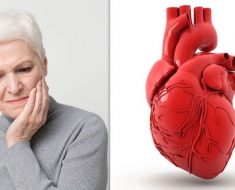The antibacterial properties of eucalyptus oil against two main oral disease pathogens
In a recent study published in the journal BDJ Open, researchers tested the efficacy of Eucalyptus oil again two bacteria responsible for dental caries. This work elucidates that Eucalyptus oil could serve as a natural alternative to chlorhexidine. Eucalyptus oil displayed significant anti-bacterial properties against both the planktonic- and more antibiotic-resistant biofilm forms.

Essential oils for oral health
An almost ubiquitous condition, dental caries, if not treated in its early stages, can cause significant mineral loss and tooth destruction. Dental caries is a biofilm disease that erodes the tooth through repeated bacteria-secreted acid attacks. In extreme cases, the infection may bore through the tooth and infect the underlying pulp.
Conventionally, the early stages of dental caries are treated using chlorohexidine products. Chlorhexidine is a broad-spectrum antimicrobial biguanide commonly used in topically treating skin and mucous membrane infections. A significant concern in its continued use is evidence suggests that biofilms may develop resistance against the antiseptic.
Searches for an alternative have proposed herbal and natural compounds as viable alternatives to chlorohexidine. However, these compounds remain understudied, with only a few studies investigating the antimicrobial characteristics of Eucalyptus oil (EO).
In the present study, researchers evaluated the antimicrobial properties of EO against Enterococcus faecalis (E. faecalis) and Streptococcus mutans (S. mutans). E. faecalis is the most treatment-resilient oral bacterium, surviving 45.8% of all treatments. S. mutans are disease-promoting microorganisms, forming biofilms that allow other bacteria to colonize and secrete acids responsible for tooth damage.
While previous research has investigated the utility of essential oils in oral therapy, they have focused on the anti-bacterial properties of these oils against the planktonic (free-living) forms. Their biofilm forms have been largely ignored, despite the latter being more resistant to therapeutic agents and more likely to develop drug resistance on prolonged antiseptic treatment.
About the study
In this study, researchers evaluate the efficacy of EO extracts dilutions of EO extract against cultures of S. mutans and E. faecalis, in controlled in-vitro conditions. Researchers began by culturing the bacteria overnight in brain-heart infusion (BHI) broth. They then standardized for bacterial concentration and added aliquots of the cultures to experimental groups containing mixtures of EO, BHI, and 2% sucrose or controls without EO in the mix.
Wells containing 10 µL of culture and 190 µL of mixture were incubated for 24 hours. Following this, a spectrophotometer estimated concentrations of the bacterias’ free-floating planktonic and sedentary biofilm forms using optical density (OD) measurements.
Sigma plots were used to record and analyze the OD results. An independent t-test compared results between the experimental and control group concentrations to elucidate the magnitude and significance of these observations.
Study findings
Planktonic forms of S. mutans were observed to have an almost 14-fold lower concentration in wells treated with EO, as compared to their controls. Biofilm forms showed even greater 61-fold reductions, suggesting that EO is a prime candidate to combat caries-related pathogens.
E. faecalis depicted similar 30-fold reductions in concentrations of both planktonic and biofilm forms on exposure to EO dilutions, suggesting that it would make an ideal natural alternative to chlorohexidine.
EO is thus shown to be a cost-effective, natural antimicrobial. It can easily be combined into mouthwash and toothpaste, potentially reducing the oral load of harmful bacteria and preventing or delaying dental caries.
“The results of this study should be interpreted carefully, as the use of conventional preventive and therapeutic approaches must still be the gold standard in preventing biofilm-triggered diseases.”
Conclusions
Due to the ubiquity of dental caries and the shortcoming of conventionally used chlorohexidine, identifying a safe and effective alternative to the antimicrobial agent is the need of the hour. Essential oils have been proposed to fit this niche ideally. Preliminary testing with Cinnamon, Lemongrass, Cedarwood, and Clove extracts has shown great promise for their antiseptic properties.
Unfortunately, this testing focused on the free-floating planktonic forms of caries-associated bacteria, mainly ignoring the more therapy-resistant biofilm forms.
“The biofilm matrix and its associated structure can limit the diffusion and permeability of antimicrobial agents toward the core of biofilms, allowing the embedded bacteria to survive and develop certain resistance mechanisms against such agents.”
The present study aimed to investigate the use of Eucalyptus oil in combating S. mutans and E. faecalis, two main bacteria involved in the oral condition. Results showed 30- to 60-fold decreases in bacterial load on treatment with EO, indicating the significant efficacy of the herbal extract against pathogenic bacteria. Notably, these results were more promising than current chlorohexidine treatments, especially again E. faecalis.
EO is thus proposed as a valuable additive to mouthwash, toothpaste, and other oral treatments. While the authors caution against taking these results as recommendations for the immediate replacement of conventional preventive and therapeutic approaches, future quantitative testing might reveal ideal dosages for the establishment of this natural herbal extract.
- Balhaddad, A. and AlSheikh, R. (2023) "Effect of eucalyptus oil on Streptococcus mutans and Enterococcus faecalis growth", BDJ Open, 9(1). doi: 10.1038/s41405-023-00154-8. https://www.nature.com/articles/s41405-023-00154-8
Posted in: Medical Science News | Medical Research News | Disease/Infection News
Tags: Antibiotic, Bacteria, Biofilms, Brain, Cinnamon, Efficacy, Enterococcus, Heart, Membrane, Mouthwash, Research, Skin, Spectrophotometer

Written by
Hugo Francisco de Souza
Hugo Francisco de Souza is a scientific writer based in Bangalore, Karnataka, India. His academic passions lie in biogeography, evolutionary biology, and herpetology. He is currently pursuing his Ph.D. from the Centre for Ecological Sciences, Indian Institute of Science, where he studies the origins, dispersal, and speciation of wetland-associated snakes. Hugo has received, amongst others, the DST-INSPIRE fellowship for his doctoral research and the Gold Medal from Pondicherry University for academic excellence during his Masters. His research has been published in high-impact peer-reviewed journals, including PLOS Neglected Tropical Diseases and Systematic Biology. When not working or writing, Hugo can be found consuming copious amounts of anime and manga, composing and making music with his bass guitar, shredding trails on his MTB, playing video games (he prefers the term ‘gaming’), or tinkering with all things tech.





